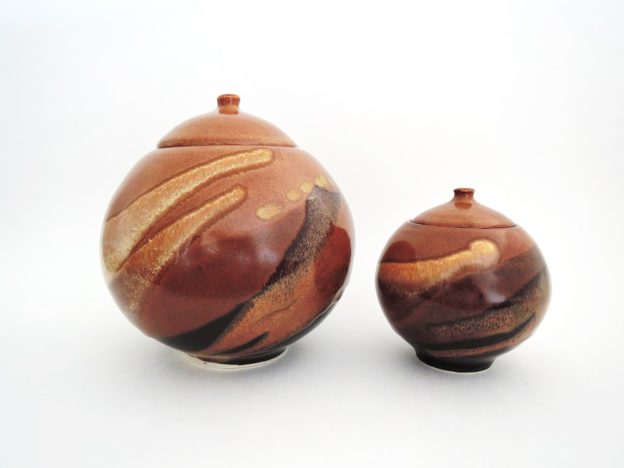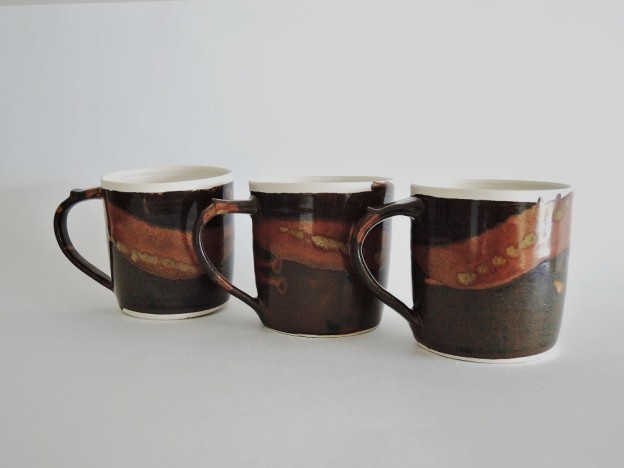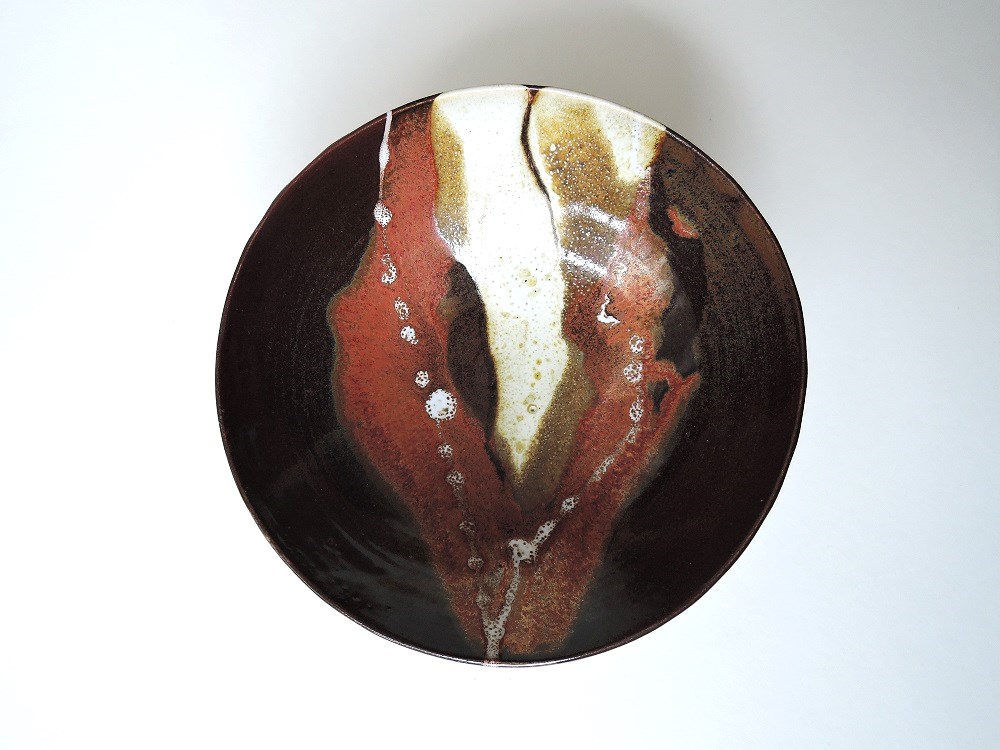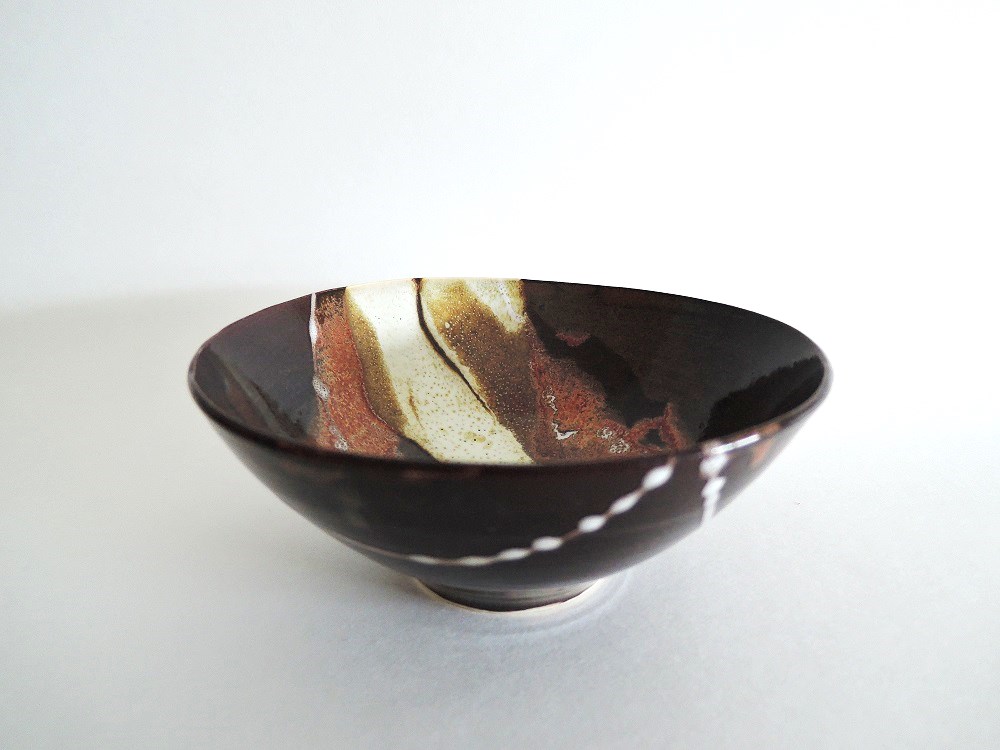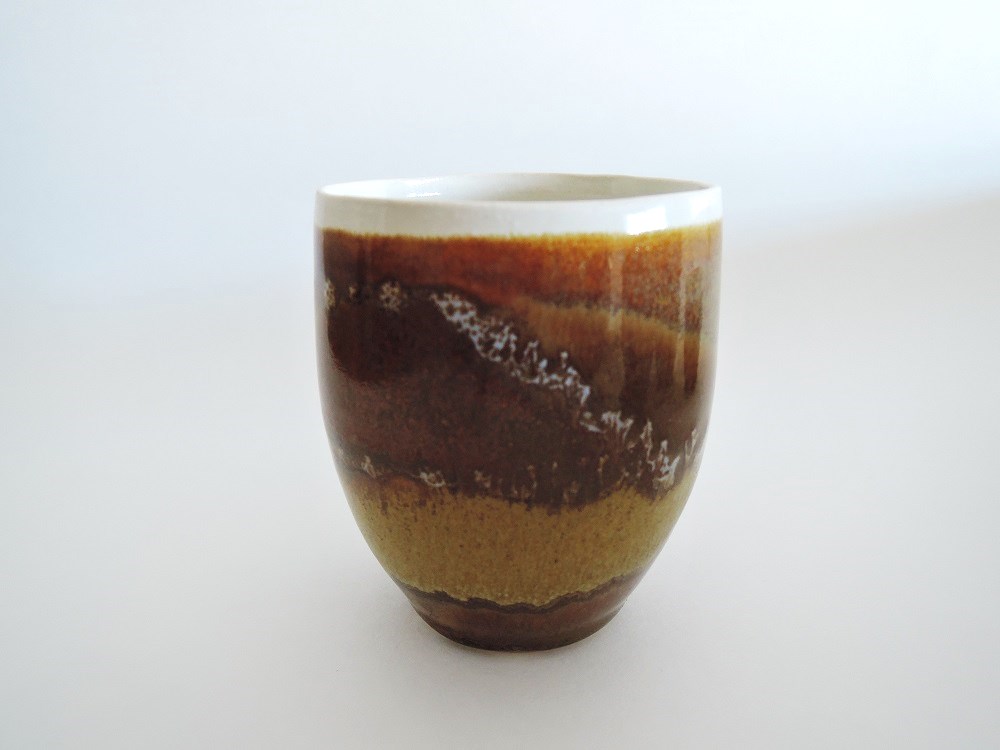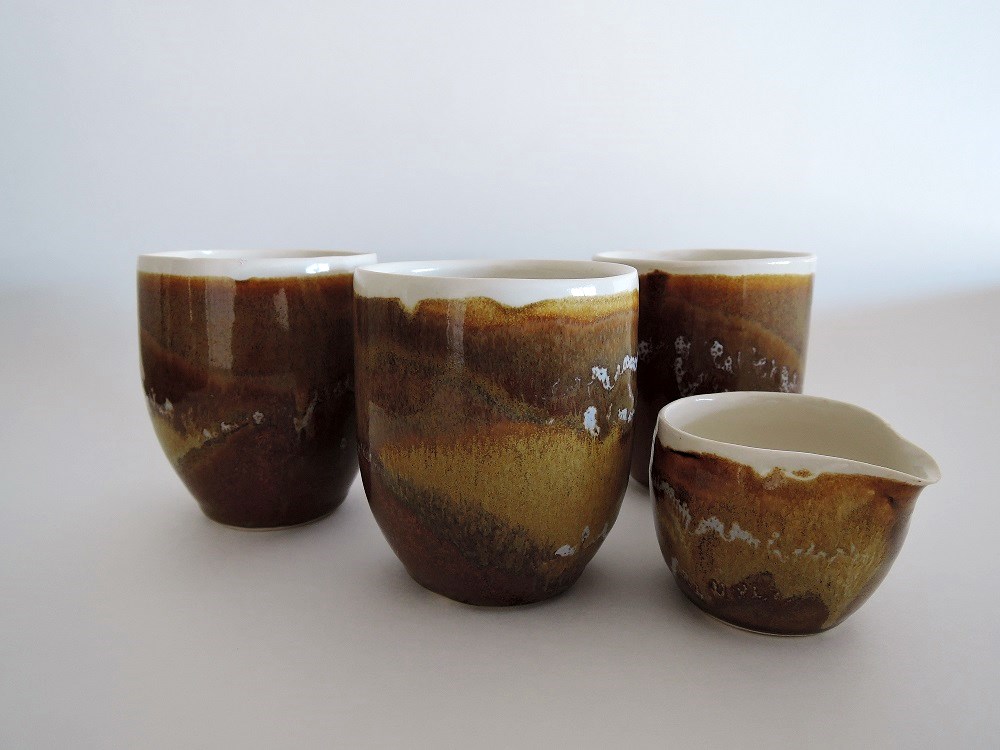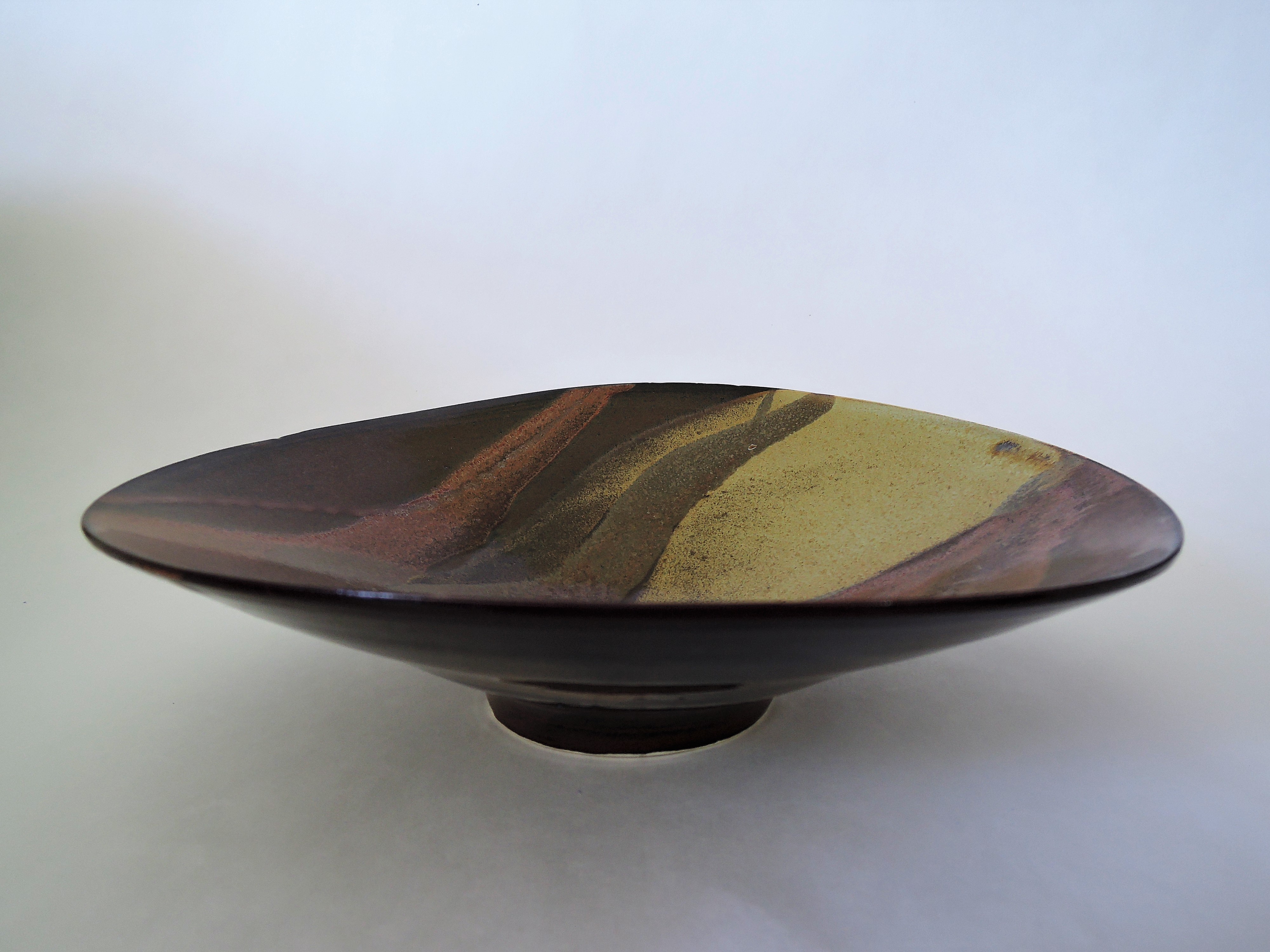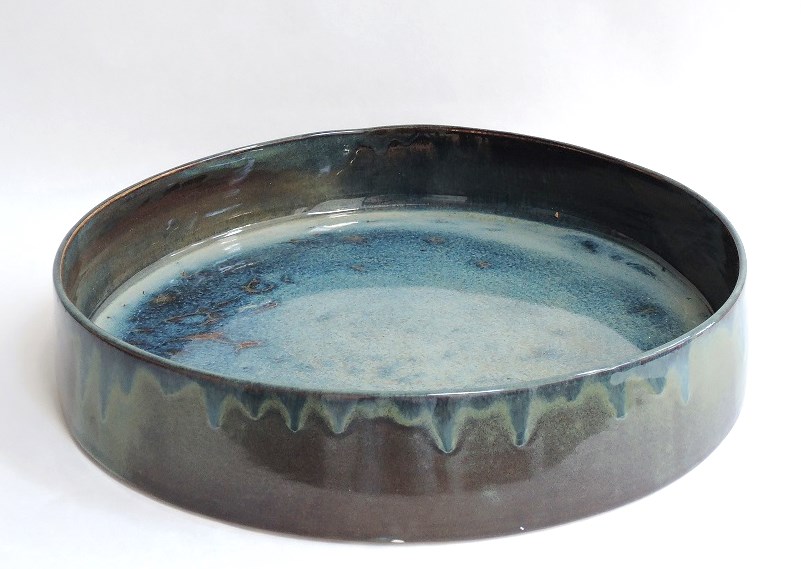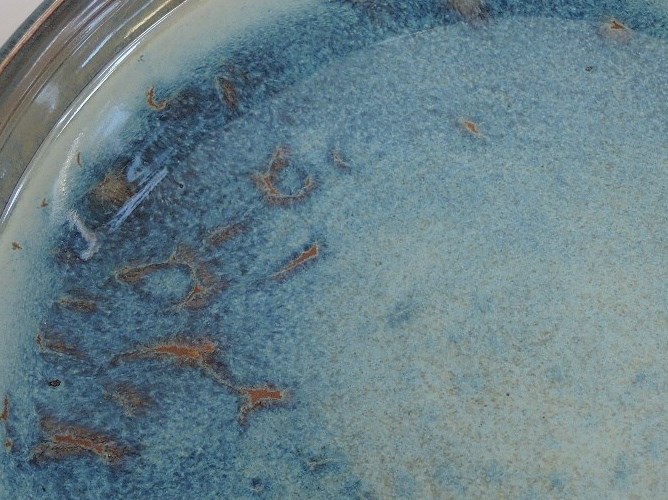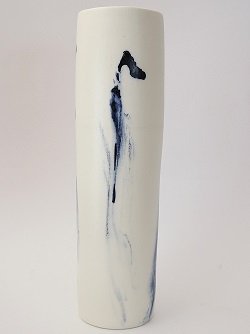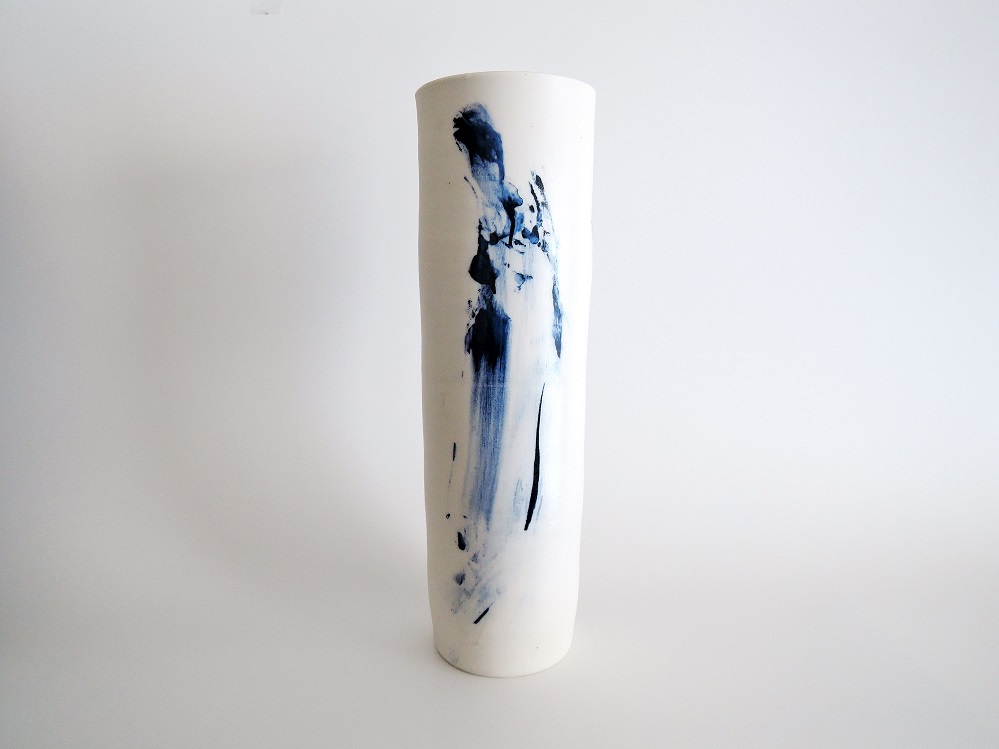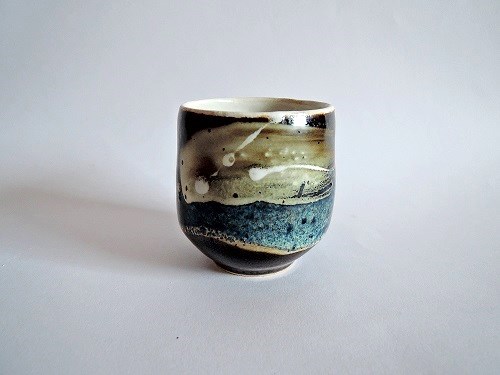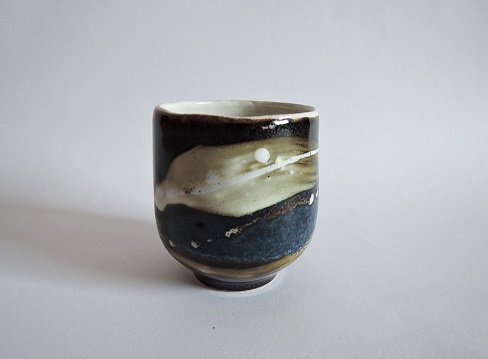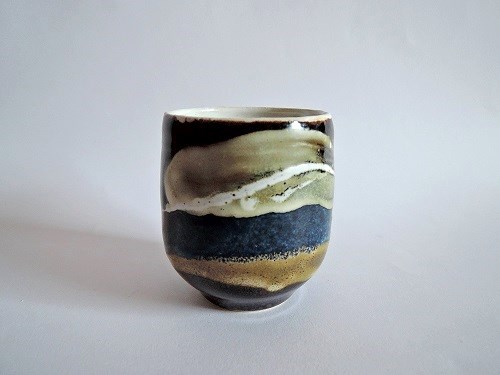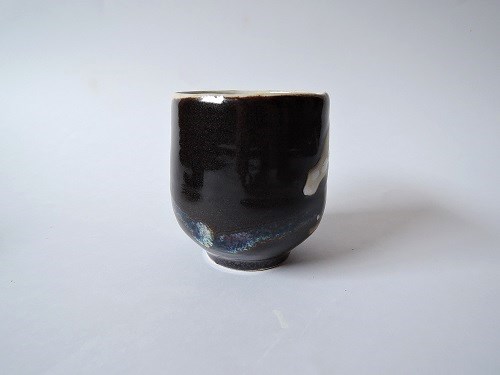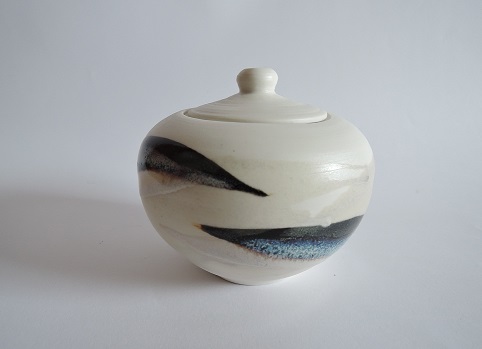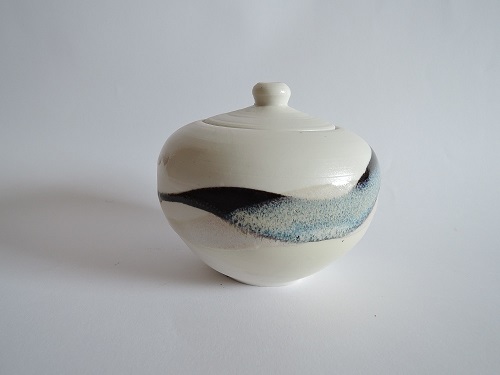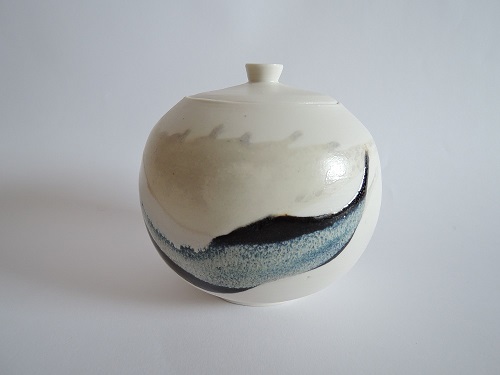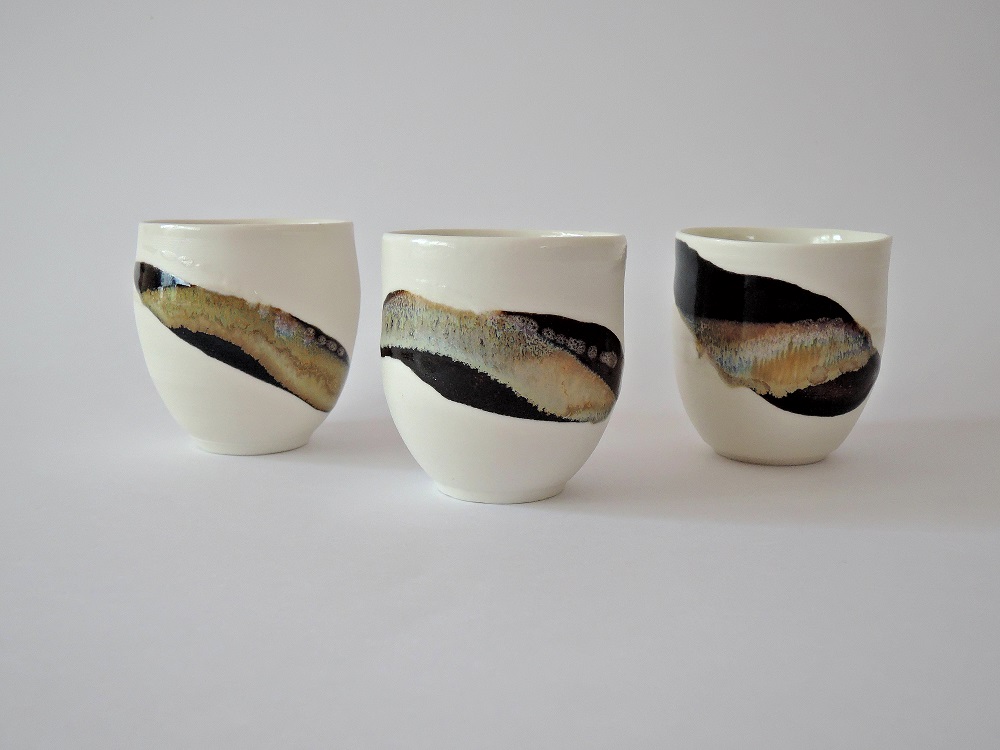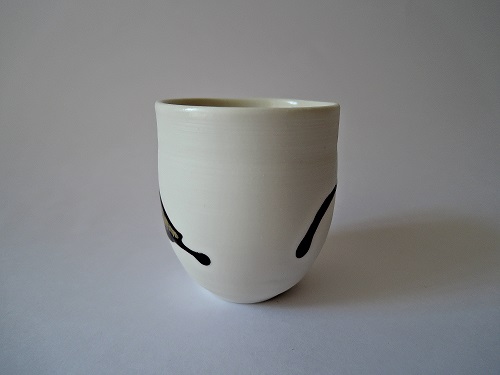Am pleased to have these two lidded pots exhibited at Galerie Côté Créations for the month of August, as part of our Ottawa Guild of Potters’ monthly showcase.
I’ve always admired the British potter Adam Buick’s moon jars, based on the traditional Korean spherical moon jars. I have added a lid, to make a true sphere that I can use as a canvas for my multiple layers of trailed glaze. I used two glazes as the first covering, one using ochre to get the nutmeg, the other with oxides of iron and cobalt to produce the deep black. Then a wide squirt of a titanium oxide-rich glaze which works well over both these glazes, even where the previous two overlap; the titanium dioxide tends to have a slightly chrystalline effect, providing a nicely contrasting, grainy, light golden band of colour.
I took a big risk with these, and refired them, as in the initial firing the glaze did not fully cover the edge of the rims. The pieces held up nicely to this additional stress. Even better, the second firing gave the nutmeg a higher gloss and a deeper, richer colour.
Porcelaneous stoneware, fired to Cone 6; in oxidation.
